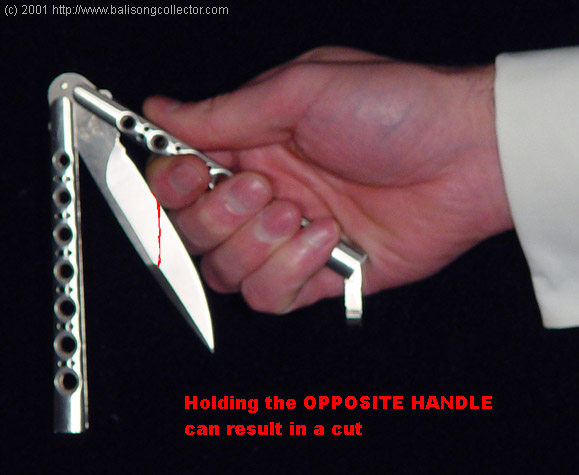Introduction
Butterfly knives, also known as balisongs, have a captivating allure and are admired for their artful manipulation. However, they are not mere toys, and their handling requires responsibility and respect. We are committed to providing a safe and enjoyable experience for butterfly knife enthusiasts. In this comprehensive guide, we will delve into the essential aspects of safe handling practices for butterfly knives, emphasizing the use of trainers for beginners to minimize the risk of injuries.
Start with a Trainer
For those new to butterfly knife manipulation, starting with a trainer is an absolute must. A trainer is a specialized, non-sharpened butterfly knife designed explicitly for practice purposes. It allows beginners to familiarize themselves with the knife's mechanics and build the necessary skills without the inherent risks associated with using a live blade. Here is a catalog of high quality trainers for beginners.
Proper Grip Techniques
Once you have acquired a trainer, mastering the proper grip techniques is crucial. The fundamental grip styles for butterfly knives are the safe handle and the bite handle. The safe handle refers to the handle without the blade, while the bite handle holds the blade. As a beginner, begin by gripping the safe handle between your index and middle fingers while securing the bite handle with your thumb. Practice opening and closing the butterfly knife using fluid, controlled motions. Avoid attempting flashy tricks or complex maneuvers before you have developed a solid foundation of handling skills. Remember, precision and control are far more important than speed during the learning phase.
Create a Safe Training Environment
Selecting the right environment for training is pivotal in promoting safety. Designate a spacious, uncluttered area where you have ample room to move without the risk of bumping into obstacles or people. Ideally, train on a non-slip surface to reduce the likelihood of accidents caused by a lack of grip. It is essential to practice in solitude or with experienced individuals who can guide you. Never attempt to showcase your skills in crowded or public spaces, as this could pose a risk to yourself and others.
Concentration and Mindfulness
Butterfly knife manipulation demands your full attention. Avoid distractions while handling the knife and practice mindfulness at all times. Never handle a butterfly knife under the influence of alcohol, drugs, or when feeling fatigued. Furthermore, refrain from attempting tricks beyond your skill level. Progress gradually and only move on to more advanced techniques once you have mastered the basics. Rushing to perform complicated moves can lead to accidents and injuries.
Maintenance and Inspections
Regularly inspect your butterfly knife, whether it is a trainer or a live blade, to ensure that all components are in proper working condition. Look for signs of wear and tear, loose screws, or damaged handles. Keep the knife clean and lubricated, as a well-maintained knife is less likely to malfunction during use. We have a blog article on how to keep your blade well maintained.
Safe Storage
When not in use, store your butterfly knife in a secure and locked container. If you have children or pets at home, take extra precautions to keep the knife out of their reach. Responsible storage not only prevents accidents but also safeguards the longevity of your knife. Again, you can follow our blog article on how to keep your blade well maintained, and safe places to keep your knife.
Conclusion
Butterfly knives can provide endless hours of excitement and skillful entertainment, but they demand responsible handling. By following the guidelines mentioned above, beginners can develop the necessary proficiency while minimizing the risk of injuries. Remember, safety should always be the top priority when using butterfly knives. Starting with a trainer, mastering grip techniques, and maintaining focus during practice are essential steps towards becoming a confident and skilled butterfly knife handler. Let's cultivate a community that appreciates the art and technique behind butterfly knife manipulation while ensuring the safety of all enthusiasts. Happy flipping and stay safe!

